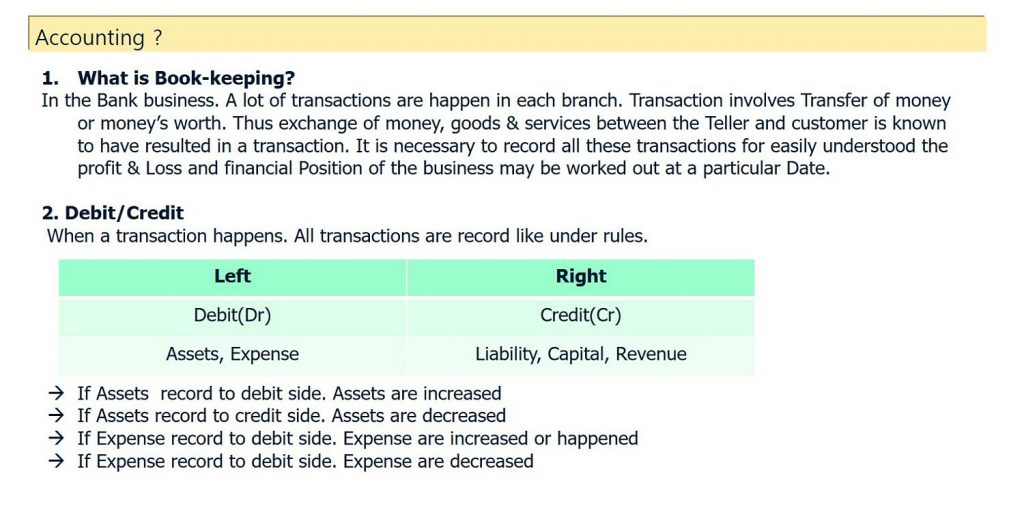Bookkeeping is the process of recording and organizing financial transactions of a business or individual. It involves keeping track of income, expenses, assets, liabilities, and equity in a systematic manner. The goal of bookkeeping is to maintain accurate and reliable financial records that can be used for decision-making, financial analysis, and reporting purposes.
Debit and credit are fundamental concepts in bookkeeping and accounting that help track the flow of financial transactions. Here’s a basic explanation of debit and credit:
- Debit: In bookkeeping, a debit entry is made on the left side of an account. It represents an increase in assets, expenses, or losses, and a decrease in liabilities, equity, or revenue. Examples of debit entries include cash payments, purchases of goods or services, and expenses incurred. Debits are typically abbreviated as “Dr.”
- Credit: In contrast, a credit entry is made on the right side of an account. It reflects an increase in liabilities, equity, or revenue, and a decrease in assets, expenses, or losses. Examples of credit entries include cash receipts, sales of goods or services, and capital contributions. Credits are usually abbreviated as “Cr.”
To ensure that the accounting equation remains balanced, every transaction must have at least one debit and one credit. This principle is known as double-entry bookkeeping. In double-entry bookkeeping, debits must always equal credits.
Here’s a simplified example to illustrate the concept:
Let’s say a business purchases supplies for $500 in cash. The bookkeeping entry would be as follows:
- Debit the Supplies account (an asset account) by $500 to increase the asset.
- Credit the Cash account (another asset account) by $500 to decrease the asset.

This entry shows that the business acquired supplies (an asset) and reduced its cash (another asset) by the same amount.
It’s important to note that the specific accounts affected and the rules of debits and credits may vary depending on the account classification and the accounting framework used (e.g., Generally Accepted Accounting Principles or International Financial Reporting Standards). Additionally, complex transactions may involve multiple accounts and require more intricate debits and credits.
Bookkeeping software or accounting systems often automate the process of recording debits and credits, making it easier to maintain accurate financial records. Professional bookkeepers, accountants, or accounting software are typically responsible for ensuring accurate recording and balance of debits and credits.
